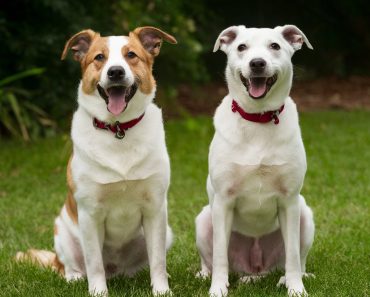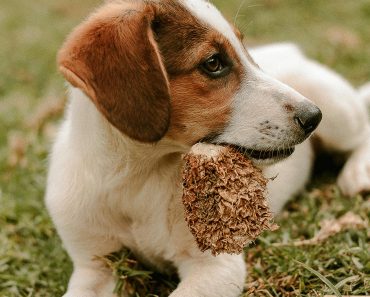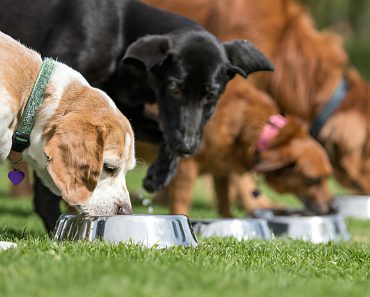Dog hair loss, medically termed as alopecia, can be a cause of concern for many pet owners. Whether you’re noticing patches of fur missing or excessive shedding, understanding the underlying causes and potential solutions is crucial. In this comprehensive guide, we delve into the reasons behind dog hair loss, effective strategies to minimize it, and the seasonality and breed predispositions associated with this common issue.
Understanding dog hair loss, or alopecia, is crucial for pet owners to identify potential underlying causes and take appropriate steps to address them. While some degree of shedding is normal for dogs, excessive hair loss or bald patches may indicate an underlying health issue. Here’s what you need to know about understanding dog hair loss:
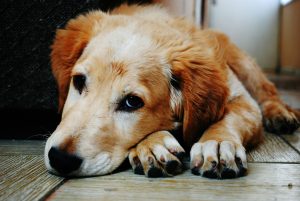
Dog hair loss
-
Normal vs. Abnormal Shedding:
-
- Dogs naturally shed old or damaged hair as part of their regular hair growth cycle. This shedding is typically distributed evenly across the body and is considered normal.
- Abnormal shedding, on the other hand, may involve excessive hair loss, bald patches, or changes in coat texture or appearance. It can be caused by various factors, including health issues, environmental stressors, or genetic predispositions.
-
Common Causes of Dog Hair Loss:
-
- Genetics: Certain breeds are genetically predisposed to hair loss or thinning coats. Breeds like the Chinese Crested, Dachshund, and Chihuahua are known for their susceptibility to alopecia.
- Skin Infections: Bacterial or fungal infections, such as ringworm or dermatitis, can cause inflammation and hair loss in dogs. These infections often present with symptoms like redness, itching, and flakiness of the skin.
- Parasites: Infestations of fleas, ticks, or mites can irritate the skin and lead to excessive scratching, resulting in hair loss. Prompt treatment of parasites is essential to prevent further skin damage.
- Allergies: Dogs can develop allergies to various allergens, including pollen, certain foods, or environmental factors. Allergic reactions can manifest as skin inflammation, itching, and hair loss.
- Hormonal Imbalance: Hormonal disorders such as hypothyroidism or Cushing’s disease can disrupt the normal hair growth cycle, leading to hair loss or thinning.
- Nutritional Deficiencies: Inadequate nutrition, particularly deficiencies in essential fatty acids, vitamins, and minerals, can affect coat health and contribute to hair loss in dogs.
-
Diagnostic Evaluation:
-
- If you notice abnormal hair loss or changes in your dog’s coat, it’s essential to consult with a veterinarian for a thorough evaluation.
- Your vet may perform diagnostic tests such as skin scrapings, blood tests, or allergy testing to identify the underlying cause of the hair loss.
- Based on the findings, appropriate treatment options can be recommended to address the specific cause of hair loss in your dog.
-
Treatment and Management:
-
- Treatment for dog hair loss varies depending on the underlying cause. It may include medications for infections or hormonal imbalances, dietary changes to address nutritional deficiencies, or allergen avoidance strategies for allergic dogs.
- In some cases, topical treatments or medicated shampoos may be prescribed to soothe the skin and promote hair regrowth.
- Regular grooming and maintenance are essential for managing hair loss in dogs, as it helps remove dead hair, prevent matting, and maintain skin health.
Stopping dog hair loss requires identifying the underlying cause and implementing targeted strategies to address it. Here are some effective steps to help minimize and prevent dog hair loss:
-
Regular Grooming:
-
- Establish a consistent grooming routine to remove loose fur, dirt, and debris from your dog’s coat. Brushing helps distribute natural oils, promotes blood circulation to the skin, and reduces shedding.
- Use appropriate grooming tools suited to your dog’s coat type, such as slicker brushes for long-haired breeds or grooming gloves for short-haired breeds.
-
-
Healthy Diet:
-
- Provide your dog with a balanced and nutritious diet formulated to support skin and coat health. Look for dog foods containing high-quality protein sources, essential fatty acids (omega-3 and omega-6), vitamins, and minerals.
- Consider incorporating supplements like fish oil or flaxseed oil into your dog’s diet to promote healthy skin and coat. Consult with your veterinarian for appropriate dosage and recommendations.
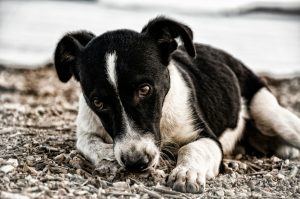
Dog hair loss
-
Parasite Control:
-
- Ensure your dog is protected against fleas, ticks, and other parasites through regular preventive treatments recommended by your veterinarian.
- Regularly inspect your dog’s coat for signs of fleas or ticks, such as itching, redness, or visible parasites. Promptly treat any infestations to prevent skin irritation and hair loss.
-
Allergy Management:
-
- Identify and eliminate potential allergens from your dog’s environment, such as certain foods, pollen, dust mites, or chemicals in household products.
- Consult with your veterinarian to determine the underlying cause of your dog’s allergies and develop a comprehensive management plan, which may include dietary modifications, hypoallergenic grooming products, or allergy testing and immunotherapy.
-
Medical Treatment:
-
- If your dog’s hair loss is due to an underlying medical condition, such as a skin infection, hormonal imbalance, or autoimmune disorder, seek veterinary care for diagnosis and treatment.
- Your veterinarian may prescribe medications, topical treatments, or dietary supplements to address the specific cause of hair loss and promote hair regrowth.
- Follow your veterinarian’s recommendations for treatment and monitor your dog’s progress closely to ensure improvement in skin and coat condition.
-
Stress Reduction:
-
- Minimize stressors in your dog’s environment, as stress can exacerbate hair loss and skin problems. Provide a comfortable and stable home environment, regular exercise, and opportunities for mental stimulation and relaxation.
Understanding the seasonal patterns of dog hair loss can help pet owners anticipate shedding periods and take proactive measures to manage their dog’s coat. While dogs typically shed year-round, certain breeds exhibit more pronounced seasonal shedding due to environmental factors such as changes in daylight and temperature. Here’s what you need to know about the seasonality of dog hair loss:
-
Spring Shedding:
-
- As the days lengthen and temperatures rise, many dogs, particularly those with thick winter coats, undergo a shedding process known as “blowing coat.”
- Breeds with double coats, such as Huskies, Malamutes, and Samoyeds, shed their dense winter undercoat to accommodate for warmer weather.
- During this time, pet owners may notice increased fur around the house and may need to increase grooming frequency to help remove loose hair and prevent matting.
-
Summer Shedding:
-
- While shedding tends to decrease during the summer months, dogs with heavy coats may continue to shed to regulate their body temperature.
- Breeds adapted to hot climates, like the Boxer or Doberman Pinscher, may experience minimal shedding during summer but still require regular grooming to remove dead hair and maintain skin health.
- Regular brushing and bathing can help remove excess fur and prevent overheating, especially in breeds prone to heat intolerance.
-
Fall Shedding:
-
- As temperatures begin to cool and daylight hours shorten, some breeds may undergo a second shedding phase to prepare for the upcoming winter.
- Dogs that shed seasonally, such as the Golden Retriever or Labrador Retriever, may experience increased hair loss during this time as they transition to their thicker winter coats.
- Regular grooming and dietary supplementation with omega-3 fatty acids can help support healthy skin and coat during the fall shedding season.
-
Winter Shedding:
-
- While shedding typically decreases during winter, indoor dogs may still experience some degree of hair loss due to artificial heating and dry air.
- Breeds with short coats, like the Beagle or Dachshund, may exhibit less noticeable shedding during winter but still require regular grooming to remove dead hair and prevent skin issues.
- Providing adequate hydration and incorporating skin-supporting supplements into the diet can help minimize dryness and irritation during the winter months.
-
Year-Round Shedding:
-
- Some breeds, such as the Poodle or Bichon Frise, are considered low-shedding or non-shedding breeds but still require regular grooming to prevent matting and maintain coat health.
- Dogs living in temperate climates or indoor environments with consistent temperature and lighting may exhibit less pronounced seasonal shedding but still undergo the natural hair growth cycle.
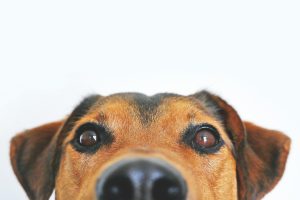
Dog hair loss
Understanding dog hair loss, or alopecia, is crucial for pet owners to identify potential underlying causes and take appropriate steps to address them. While some degree of shedding is normal for dogs, excessive hair loss or bald patches may indicate an underlying health issue. Here’s what you need to know about understanding dog hair loss:
-
Normal vs. Abnormal Shedding:
-
- Dogs naturally shed old or damaged hair as part of their regular hair growth cycle. This shedding is typically distributed evenly across the body and is considered normal.
- Abnormal shedding, on the other hand, may involve excessive hair loss, bald patches, or changes in coat texture or appearance. It can be caused by various factors, including health issues, environmental stressors, or genetic predispositions.
-
Common Causes of Dog Hair Loss:
-
- Genetics: Certain breeds are genetically predisposed to hair loss or thinning coats. Breeds like the Chinese Crested, Dachshund, and Chihuahua are known for their susceptibility to alopecia.
- Skin Infections: Bacterial or fungal infections, such as ringworm or dermatitis, can cause inflammation and hair loss in dogs. These infections often present with symptoms like redness, itching, and flakiness of the skin.
- Parasites: Infestations of fleas, ticks, or mites can irritate the skin and lead to excessive scratching, resulting in hair loss. Prompt treatment of parasites is essential to prevent further skin damage.
- Allergies: Dogs can develop allergies to various allergens, including pollen, certain foods, or environmental factors. Allergic reactions can manifest as skin inflammation, itching, and hair loss.
- Hormonal Imbalance: Hormonal disorders such as hypothyroidism or Cushing’s disease can disrupt the normal hair growth cycle, leading to hair loss or thinning.
- Nutritional Deficiencies: Inadequate nutrition, particularly deficiencies in essential fatty acids, vitamins, and minerals, can affect coat health and contribute to hair loss in dogs.
-
Diagnostic Evaluation:
-
- If you notice abnormal hair loss or changes in your dog’s coat, it’s essential to consult with a veterinarian for a thorough evaluation.
- Your vet may perform diagnostic tests such as skin scrapings, blood tests, or allergy testing to identify the underlying cause of the hair loss.
- Based on the findings, appropriate treatment options can be recommended to address the specific cause of hair loss in your dog.
-
Treatment and Management:
-
- Treatment for dog hair loss varies depending on the underlying cause. It may include medications for infections or hormonal imbalances, dietary changes to address nutritional deficiencies, or allergen avoidance strategies for allergic dogs.
- In some cases, topical treatments or medicated shampoos may be prescribed to soothe the skin and promote hair regrowth.
- Regular grooming and maintenance are essential for managing hair loss in dogs, as it helps remove dead hair, prevent matting, and maintain skin health.
Dog hair loss can be a distressing issue for pet owners, but with proper understanding and care, it’s often manageable. By addressing underlying health concerns, maintaining a healthy diet, and implementing a consistent grooming routine, you can help minimize hair loss and keep your furry friend happy and healthy year-round. If you notice persistent or severe hair loss, consult with your veterinarian for a thorough evaluation and personalized treatment plan.


